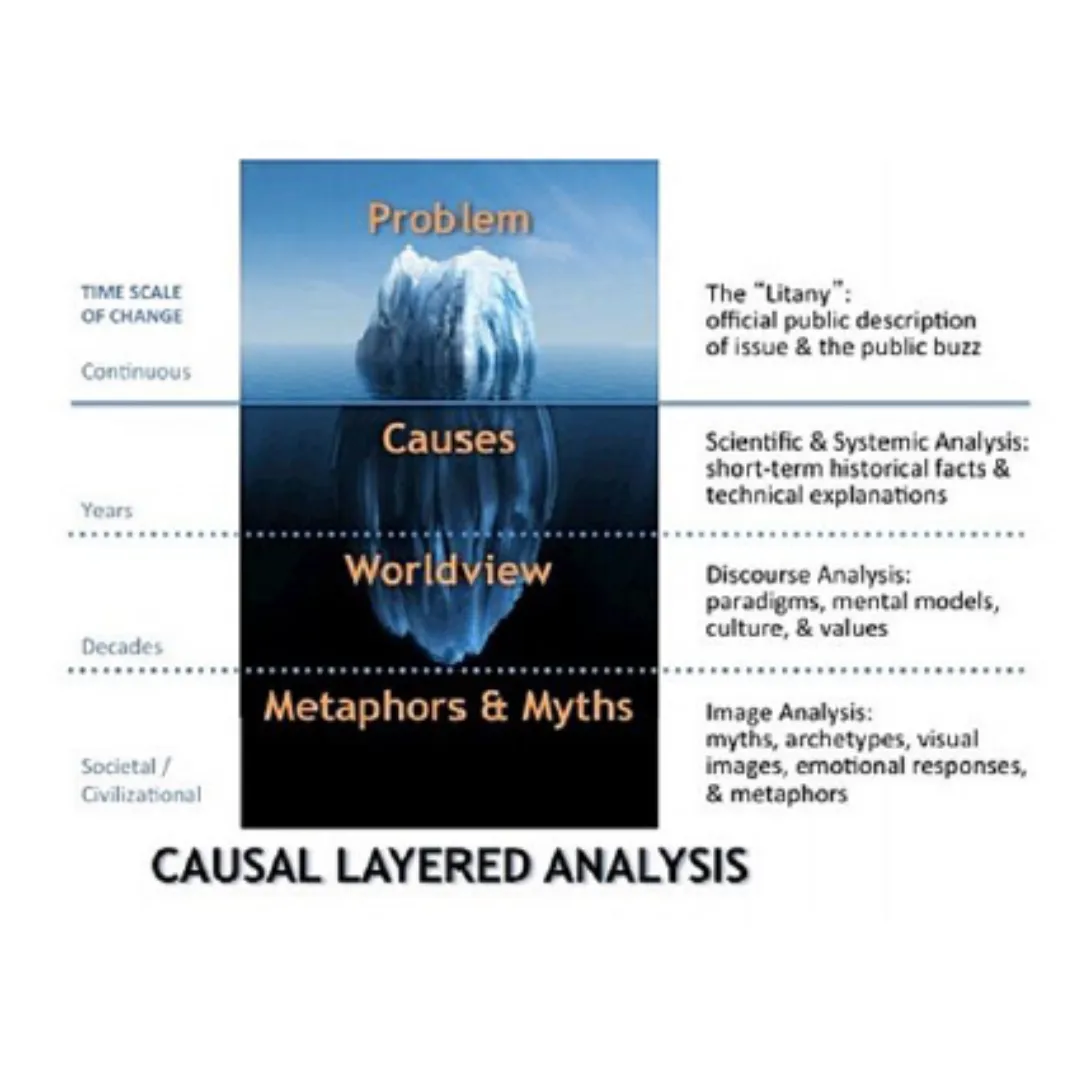
Review - The Majoritarian Myth, by Kausik Gangopadhyay
19 March, 2024
1814 words
share this article
Imagine this: a world where every societal woe, every challenge that surfaces, is routinely attributed to the actions or beliefs of the majority.
Sound familiar?
The statement could only sound familiar in a country like Bhārata. One of the few remaining lands where the majority of the population remains non-Abrahamic, at least by name if not by identity, too.
Scientist Anand Ranganathan captures it well in the Foreword of the book: while there are striking revelations in the heart of our Constitution that shape our social fabric, which author Dr. Kausik Gangopadhyay reveals, there is also a rich collection of ideologies - on majority and minority - that shape our perceptions. There are theory-driven world-views, and empirical-driven worldviews.
We live in a world where there are biases against the majority, under the pretext of safeguarding minority rights. The growth of liberalism and cultural Marxism have enhanced and highlighted some of these biases in ironic ways - humorously ironic, perhaps, if they weren’t the lived reality for many.
This book helps us take theories out of the lands of abstraction, and plant them firmly into empirical reality.
The Four Feats
In the Foreword, Ranganathan applauds Dr. Gangopadhyay for his unwavering courage to confront tough issues, staking his reputation and his career - “It’s a feat worthy of admiration.” The four feats that mainly come out:
(1) The prevalent notion that liberalism is a one-size-fits-all solution today, must be challenged. It’s preposterous to think that any single man-made ideology, limited to the time and space in which it was created, can be applied everywhere, all the time, to bring about societal harmony and global well-being. Yet, this is precisely the worldview that we are constantly exposed to today.
(2) The myth that all cultures and religions are identical, must be shattered. This myth carries quite a bit of baggage given Bhārata’s pre- and post-Independence leaders and ideologies. Dr. Gangopadhyay shows that not all paths are equal, not all beliefs stand on the same ground, with rigorous scientific analysis and data. After all, there are striking imbalances among cultures and religions, with some being more intolerant than others.
Śrī Sita Ram Goel in his book Perversion of India’s Political Parlance, had observed this years ago. In the colonial history of Bhārata, with four waves of colonization that occurred, each consecutive wave had a clear characteristic trait. Be it the Islamic wave of colonization, the Christian wave, the British Imperial wave, or the Communist wave - all four declared their own believers as the supremely correct group, and all non-believers as criminals in some way, shape, or form. More on this here.
(3) Diversity, equity, and inclusion as the lofty ideals of a just society, must be questioned. Do they truly make the world a better place? There is clear evidence to show that they are misguided and sinister by-products of the liberal world-view. They ultimately hamper social harmony, rather than promoting it.
(4) There is one final, uncomfortable truth that must be addressed. What we call social justice today is, at its core, envy. It’s simply envy that’s undergone a “makeover” in order to look and function guilt-free, under the pretext of social justice which everyone wants to embrace.
Majoritarianism and LTSE
What is Majoritarianism? An important question.
Majoritarianism considers the majority to be oppressors of the minority, always. Therefore, whenever, wherever, in whichever issues, two communities - one belonging to the majority and the other from the minority - are in conflict with each other, the blame goes completely to the majority community irrespective of the reality.
Readers automatically understand why this type of thinking is neither just nor fair.
Meanwhile, there is a factor known as Linear Theory of Social Evolution (LTSE) in a community. LTSE may determine the extent of social intolerance from the community.
A majority without LTSE may not be intolerant. A minority with LTSE will be intolerant.
However, LTSE has become a foundational building block for the western and liberal worldview that we’re exposed to today. Rarely do people recognize its presence, realize its consequence, or escape from the hamster-wheel lifestyle and rat-race that it makes out of life.
What is LTSE? Linear Theory of Social Evolution, or Linear Theory of Social Change, states that social change takes place in a linear manner - from worse to better, simple to complex, backwards to modern.
LTSE assumes that only one pre-defined way of living is the ideal one, the one to be sought after, by everyone everywhere.
Were Śrī Sita Ram Goel alive, he may have termed it another wave of colonization. Or, noted how it is a new way to say the same thing: in this world-view, there’s an in-group and there’s an ouṭ-group. Those who don’t fit into the in-group - the member of the out-group - are labeled as backwards.
What Goes Into Myth
Dr. Gangopadhyay opens the first section of the book with a powerful truth:
People generally consider myth and mythology a thing of the past and boast scientific understandings of the present age. What they do not understand is that neither the people in the past were altogether bereft of scientific consciousness and scientific comprehension, not in the present age are we devoid of the myths of our age.
Every age has its myths, though people may not be aware of them. Our ability to traverse more smoothly through the journey of life depends on the heaviness or the transparency of the myths coloring our lens of vision. If the lens through which we see the world is too colored by anti-science bias, then life becomes a bumpy ride.
In a previous piece on Dhīti, we explored the Culture Iceberg. In analyzing the power of myth, Dr. Gangopadhyay bring to light Sohail Inayatullah’s Causal Layered Analysis framework. Here, collective myths represent the deepest psychological bias coming through societal understanding. Myths crystallize into worldviews, propagating causes, and finally surfacing as problems.

Long-story-short - In current times, the Majoritarian Myth has led to a major problem: The official public discourse today views any event as an expression of the majority oppressing the minority.
We see several examples of this playing out over the past decade and half, in news media and other places. It’s now a world-wide phenomenon, with unique expressions among the various demographics of various nations and states today:
- The Death of George Floyd and the Aftermath
- Hafiz Junaid and Umesh Kolhe
- The Case of Kashmiri Pandits
Dr. Gangopadhyay takes up many more cases for study in his early chapters of the book.
Majority and Minority in Constitutions Across the World
How do written law and public policy contribute to this? For it is not only the myth coloring the minds of the masses now - part of this has also been embedded into our constitution, further propagating the worldview one generation at a time, starting with laws around religion, education, and government funding.
We observe that the Indian constitution has articles discriminating against the majority, although Article 15 … clearly enunciates that the state would not allow any discrimination on the ground of religion.
Dr. Gangopadhyay painstakingly outlines, with the scary thoroughness of a seasoned lawyer, the articles within our constitution that propagate religion being discriminatory to the majority group, the Hindus. This especially plays out in the realm of education, regarding what is allowed with and without state funding.
Here, the author conducts a comparative analysis of constitutions in Western countries. Through this, the reader observes that be it England, France, Belgium, or the United States:
Either the minority has the same rights as the majority regarding education, or the majority has more control over the educational institutions in the Western nations.
Politics of Bhārata regarding the Majoritarian Myth
We see that the “secular” worldview is not so secular even in those countries in which it was born; because the secular worldview again tilts the world towards being pro-Abrahamic, against that which is non-Abrahamic. For all functionalities and purposes, in a country like ours - we can equate the word non-Abrahamic to Hindu or dhārmika.
In our context, the majoritarian myth has led to the furthering of Nehruvian secularism, and actively worked against any efforts towards decolonization.
The majoritarian myth has given birth to the secular worldview - arguably the most powerful label in Indian politics. Nehruvian secularism started with the legacy of Nehru that the majority must be blamed if the minority do not feel secure, irrespective of actual facts and observations.
The myth has expressed itself in legislation in a very literal sense with the Communal Violence Bill:
It assumed that only groups of the majority… may target a person from the minority community while the vice versa was not even considered as a possibility under this bill.
Government control of Hindu temples and scholarships for minority religions are other examples of the majoritarian myth expressed through legislation and implementation of law and public policy.
The net effect of these in Bhārata, being that the majority group (Hindus) enjoy lesser effective rights than other communities do, while at the same time they are blamed disproportionately more under the lens of majoritarianism.
Stay Tuned and Read More
Where do the solutions to this paradox lie? We will evaluate this in the next installments of this series. In Part 2 of the book review, we will start by exploring the origins of the myth of majoritarianism including the etymology and evolution of the word “majority”, the thread of thinkers through recent European history who shaped our understanding of populations and majority groups; and how more recently, the growth of liberalism led to the perception of the majority group as the oppressors, always. We’ll also look at LTSE and social intolerance in more detail, leading up to the scientific examination of evidence.
Dr. Kausik Gangopadhyay is a professor of Economics at the Indian Institute of Management, Kozhikode. A true academic who has conducted research and studies in this area for years, he has more recently been featured on several podcasts and talks. His book is already reviewed by thinkers like Shrikant Talageri and R. Jagannathan, and can be purchased here. Follow him on Twitter to engage with more posts on Indic Civilizational Issues and Social Sciences, including three different weekly series on Bengal’s Hindutva Legacy, Indic Governance, and Book Reviews.
Read Part 2 of the review here.